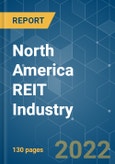REITs are companies that own (and often operate) income-producing real estate, such as apartments, warehouses, self-storage facilities, malls, and hotels. Their appeal is simple: The most reliable REITS have a track record for paying large and growing dividends. Still, that potential for growth carries risks that vary depending on the type of REIT.
In North America: Canada, the US, Mexico, Costa Rica only have REITs approach in their real estate markets and economies. In the United States alone, there are 190 Real Estate Investment Trusts (REITs) with a total market cap of 1.3 trillion USD since the US is the oldest of all countries to create REITs in 1960 as a way for individual investors to own equity stakes in large-scale real estate companies. In the United States, demand for digital-style real estate continues, whether it’s in the tower sector or the data center sector.
In Canada, there are 48 REITs with a total market cap of 78.3 billion USD as of September 30, 2019. The growing demands for climate change, hazard risk, and ESG disclosure, both from the regulatory side and from the investor side is the main issue for the REITs in Canada going forward.
Key Market Trends
REITs prominence in Senior Housing & Care Market in United States
Since 2016, there has been a clear trend in the mix of investors in the senior housing and care transaction market. During this period, private equity buyers (including dedicated senior housing funds, opportunity funds, and commingled funds with core-plus and value-add investment objectives) have become increasingly active in the marketplace. In 2015, REITs were the prominent buyer in this market. Private equity buyers (43.4%) and REIT buyers (26.3%) have accounted for 69.7% of all transaction activity in 2019 so far.
REITs are debt heavy by nature
The consequence of legal status is that REITs have a lot of debt. They’re usually among the most indebted companies in the market. However, investors have become comfortable with this situation because REITs typically have long-term contracts that generate regular cash flow - such as leases, which see to it that money will be coming in - to comfortably support their debt payments and ensure that dividends will still be paid out. An infographic showing the debt outstanding of REITs in United States over the years is presented below.
Competitive Landscape
The report includes an overview of REITs operating across North America. We wish to present detailed profiling of a few major companies which cover product offerings, regulations governing them, their headquarters, and financial performance. Currently, some of the major players dominating the market are listed below.
Additional Benefits:
- The market estimate (ME) sheet in Excel format
- 3 months of analyst support
This product will be delivered within 2 business days.
Table of Contents
Methodology

LOADING...








